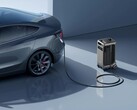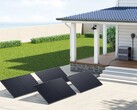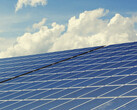Virtual power plants are intelligent systems that link together decentralised sources of energy such as solar panels, chargers for electric cars and battery storage units. The innovative technology optimises the generation and distribution of energy in real time.
This avoids grid congestion, cuts costs and reduces CO2 emissions. Unlike the giant nuclear reactors with smoking chimneys we are used to, virtual power plants have no physical form. They are designed to save costs and avoid grid congestion, while gradually replacing fossil fuels with renewable energy sources.
The smart systems, also known as VPPs, connect, combine and control distributed energy sources such as solar panels, wind power plants and battery storage - for example via Wi-Fi, Bluetooth and mobile phone services.
Governments and private companies are increasingly relying on VPPs. They can coordinate hundreds of thousands of devices, such as rooftop solar panels and electric vehicle chargers. This helps to ensure a balanced supply of energy and a reliable supply of power on a large scale.
How does VPP work?
System operators register their installations with the VPP operator, who collects performance and availability data in real time. On this basis, the VPP optimises all energy generation and feed-in to the grid, and operates market-driven energy trading.
It also provides balancing energy to help smooth out fluctuating generation and demand and ensure grid stability. For example, thermostats can be used to cool homes before peak load times on hot summer days. This helps to avoid overloading the grid. In a similar way, chargers for electric vehicles can be adjusted to match the demand on the grid.
Many VPP projects in the USA
VPP capacity in the US is estimated to be between 30 and 60 gigawatts. This is expected to increase to between 80 and 160 gigawatts by 2030. Examples include programmes where customers receive financial support to purchase Tesla home batteries and share the stored energy with the utility, such as Green Mountain Power, the largest utility in Vermont.
In Massachusetts, three utilities have a programme in place where customers are paid to have the companies take control of their home batteries. Meanwhile, in Colorado, efforts are underway to establish a statewide VPP pilot programme, where grid operators would cover daily "peak load", for example.
Many utilities believe that by making more efficient use of distributed energy resources and increasing the share of renewable energy, VPPs can help reduce CO2 emissions and significantly lower consumers' energy bills.
What's next?
In order to spread the word about the benefits of VPPs, the National Association of Regulatory Utility Commissioners has started to organise panels and workshops, and the California Energy Commission is going to fund research. But there are still a lot of hurdles to overcome, such as the lack of standardised enrolment procedures for consumers and the data security of the systems.
It really comes down to policy. The technology is in place. We are continuing to learn about how to best implement these solutions and how to interface with consumers.
- Kevin Brehm, a manager at the Rocky Mountain Institute who works on carbon-free electricity.
Source
MIT Technology Review | symbolic image: DALL-E / AI





















